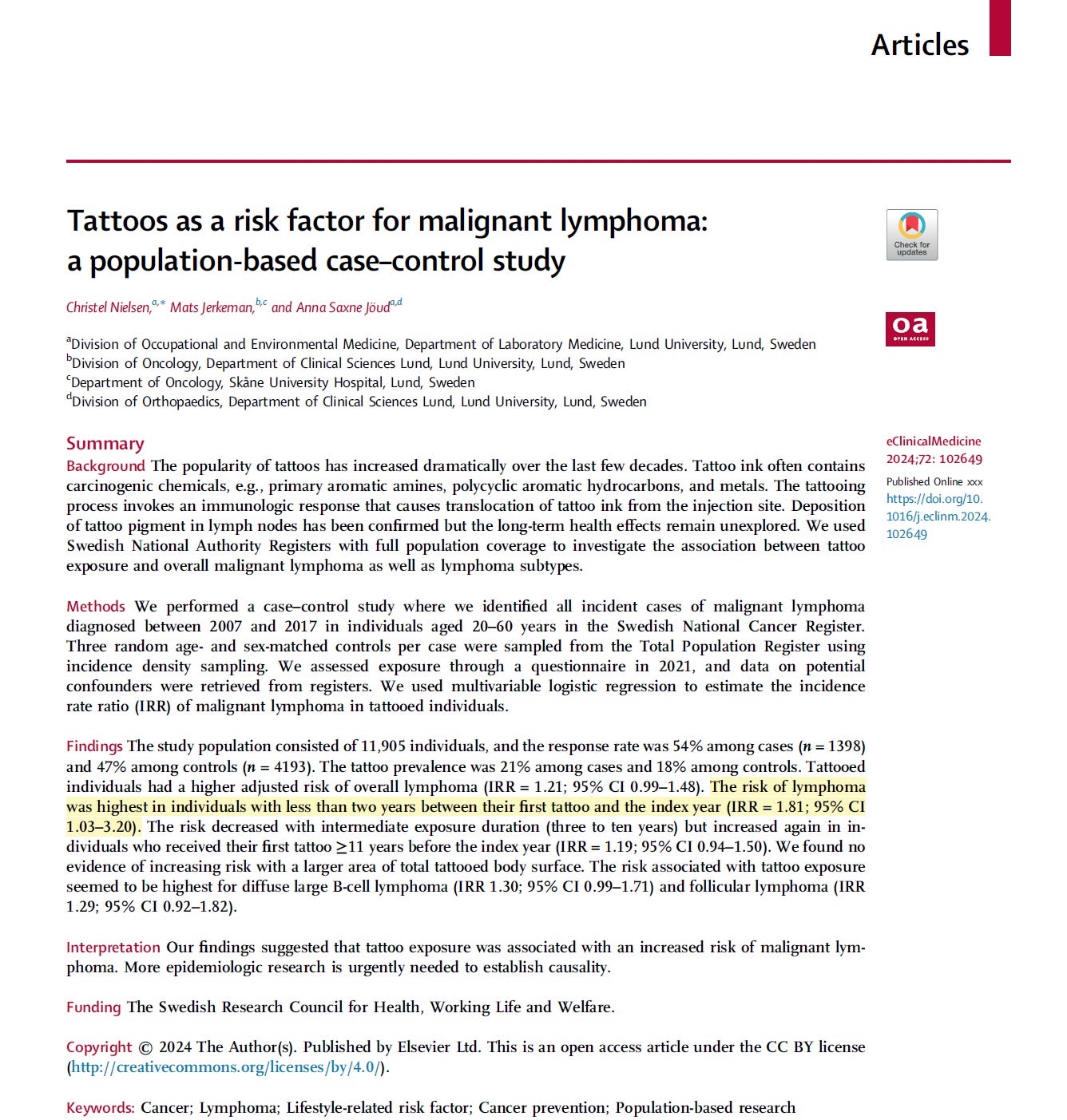
All Global Research articles can be read in 51 languages by activating the Translate Website button below the author’s name (only available in desktop version).
To receive Global Research’s Daily Newsletter (selected articles), click here.
Click the share button above to email/forward this article to your friends and colleagues. Follow us on Instagram and Twitter and subscribe to our Telegram Channel. Feel free to repost and share widely Global Research articles.
Global Research Wants to Hear From You!
***
As summertime approaches, one cannot help but notice the every increasing appearance of visible tattoos, mainly in forest green ink. Unlike tie-dye shirts, bell-bottoms, new hairstyles and other fads, tattoos represent a permanent form of mass mimicry or mimesis. Most people with tattoos give less than a compelling reason for this life-long commitment.
The skin is loaded with lymphocytes and one can only wonder does the ink or one of its chemical components stimulate these cells to become cancerous. After multiple individual case reports of lymphoma in tattoo enthusiasts, Nielsen et al has published this disturbing report from Lund, Sweden.
“The study population consisted of 11,905 individuals, and the response rate was 54% among cases (n = 1398) and 47% among controls (n = 4193). The tattoo prevalence was 21% among cases and 18% among controls. Tattooed individuals had a higher adjusted risk of overall lymphoma (IRR = 1.21; 95% CI 0.99–1.48). The risk of lymphoma was highest in individuals with less than two years between their first tattoo and the index year (IRR = 1.81; 95% CI 1.03–3.20). The risk decreased with intermediate exposure duration (three to ten years) but increased again in individuals who received their first tattoo ≥11 years before the index year (IRR = 1.19; 95% CI 0.94–1.50). We found no evidence of increasing risk with a larger area of total tattooed body surface. The risk associated with tattoo exposure seemed to be highest for diffuse large B-cell lymphoma (IRR 1.30; 95% CI 0.99–1.71) and follicular lymphoma (IRR 1.29; 95% CI 0.92–1.82).”

https://doi.org/10.1016/j.eclinm.2024.102649
For those who made the potentially unwise choice of a tattoo, these data suggest active surveillance for new persistent rashes, fever, night sweats, recurrent viral illness, or swollen lymph nodes as signs of incipient lymphoma.
*
Note to readers: Please click the share button above. Follow us on Instagram and Twitter and subscribe to our Telegram Channel. Feel free to repost and share widely Global Research articles.
Featured image is from Flickr/Licensed under CC BY-NC-ND 2.0
Comment on Global Research Articles on our Facebook page
Become a Member of Global Research
Source link

